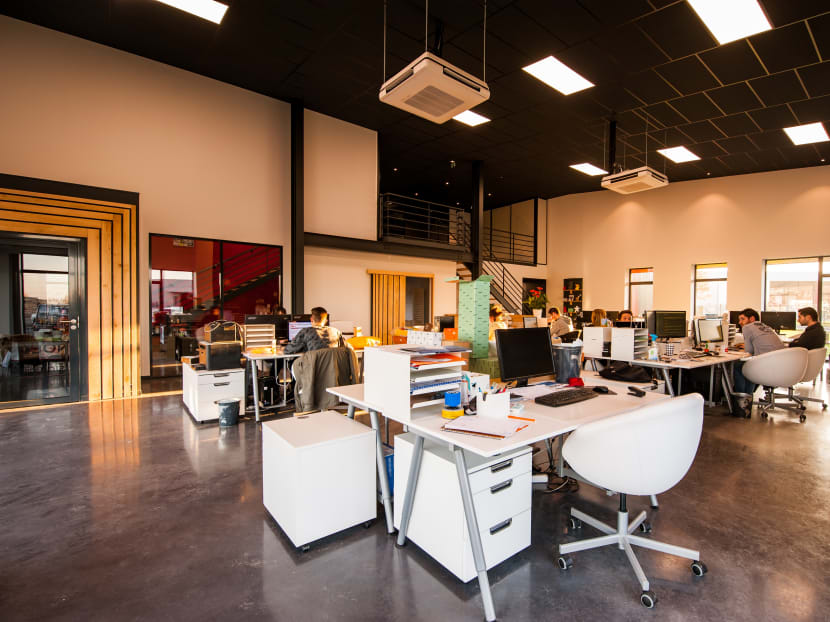The CEO will see you now: The pitfalls of open plan offices
When Bill Arnold, a pioneer of progressive management, wanted to signal his devotion to transparent “person-centred leadership” at the medical centre he headed in the 1990s, he ordered the door of his office removed from its hinges and hung in the lobby.

Whether bringing leader and team closer together makes for better performance and engagement depends very much on the context.
When Bill Arnold, a pioneer of progressive management, wanted to signal his devotion to transparent “person-centred leadership” at the medical centre he headed in the 1990s, he ordered the door of his office removed from its hinges and hung in the lobby.
Having opened their doors, leaders moved on to the walls.
After taking over as chief executive of Standard Life in 2009, David Nish sought to accelerate the Edinburgh insurer’s transformation from stodgy mutual to agile listed company by scrapping its executives’ offices.
He put a round desk out in the open, where he could hold impromptu gatherings with up to eight colleagues, installed a glass boardroom for more private meetings, and opened a coffee shop for all staff in what used to be the leadership inner sanctum.
The parallel pressures of hybrid work, social distancing and post-Covid efficiency measures have renewed the assault on executive floors.
Last week, Noel Quinn, chief executive of HSBC (where Mr Nish is, coincidentally, now senior independent director), posted a picture on LinkedIn of the open-plan hot-desks he and his team will occupy at London headquarters.
Bloomberg reports Bill Winters, Mr Quinn’s counterpart at Standard Chartered, is allowing his old office to be booked by anyone, as part of the bank’s flexible working plan.
The complexities of hybrid working, and the horrors of hot-desking, have been well chronicled.
Chief executives enthuse about open-plan working. They are the ones who can order in the demolition crews, and they are generally among the beneficiaries of any efficiency gains.
Staff tend to be less keen, caught between the perils of presenteeism and constant surveillance from a sort of CEO panopticon.
Open-plan offices may even inhibit communication, according to studies.
Whether bringing leader and team closer together makes for better performance and engagement depends very much on the context.
Senior leaders at AB InBev, the global drinks group, sit at desks located at the heart of their open-plan offices around the world. Enthusiastic staff have likened the access they have to working at a start-up.
That echoes the example set by Silicon Valley’s David Packard, who practised “management by walking around” at Hewlett-Packard when he was in charge.
Anne Live Vaagaasar of BI Norwegian Business School has interviewed project leaders who strongly preferred working close to their teams in open-plan offices.
They said they could “sense the mood” of the group more easily, share tacit knowledge and make decisions faster.
As I’ve written, office space is less relevant after more than 12 months of remote working.
Leaders who have not found a way to communicate with staff who sit outside their line of sight have not been trying hard enough.
They should have learnt how to dismantle virtual, as well as physical, barriers. Such obstacles are often invisibly embedded in online calendar clashes, or evident only if someone notices certain staff are absent from hybrid meetings, or silent during them.
How effectively leaders lead has never truly been determined by whether they are working from behind a closed door or in the middle of a “bullpen” like the open office used by Michael Bloomberg at City Hall when he was mayor of New York.
Context can also change.
Mr Bloomberg was roundly ridiculed in 2019 for suggesting he would quit the Oval Office and go open-plan if he won the presidency, with its stricter security and privacy constraints.
Even open door policies can be less than they seem.
Mark Zuckerberg’s “open” office at Facebook headquarters is reportedly policed by a ring of security guards.
The symbolism of the abolition of the executive floor at HSBC, once one of the most tradition-bound corporate institutions on the planet, should not be underestimated.
Mr Nish told me his revamp of Standard Life headquarters served to underline the radical change under way at the group after demutualisation.
Some staff griped. One senior manager lamented Mr Nish had dashed his life’s dream of being assigned a private office overlooking Edinburgh Castle.
Most adjusted. Those who did not marked themselves out as adherents to the old culture.
The old Standard Life office was, Mr Nish says, “one of the most soulless environments I’ve ever worked in”.
HSBC’s new layout does not exactly look full of soul. That is a sign of the sanitary times.
But the floor plan matters less than critics think.
As Mr Quinn acknowledged on LinkedIn, “It would be a missed opportunity if... we just drift back to our old ways of working”.
Leaders will have to do more than shuffle their desks to grasp that opportunity, which is less about open-plan work or open-door policies, and more about open minds. FINANCIAL TIMES
ABOUT THE AUTHOR:
Andrew Hill is an associate editor and the management editor of the Financial Times.






